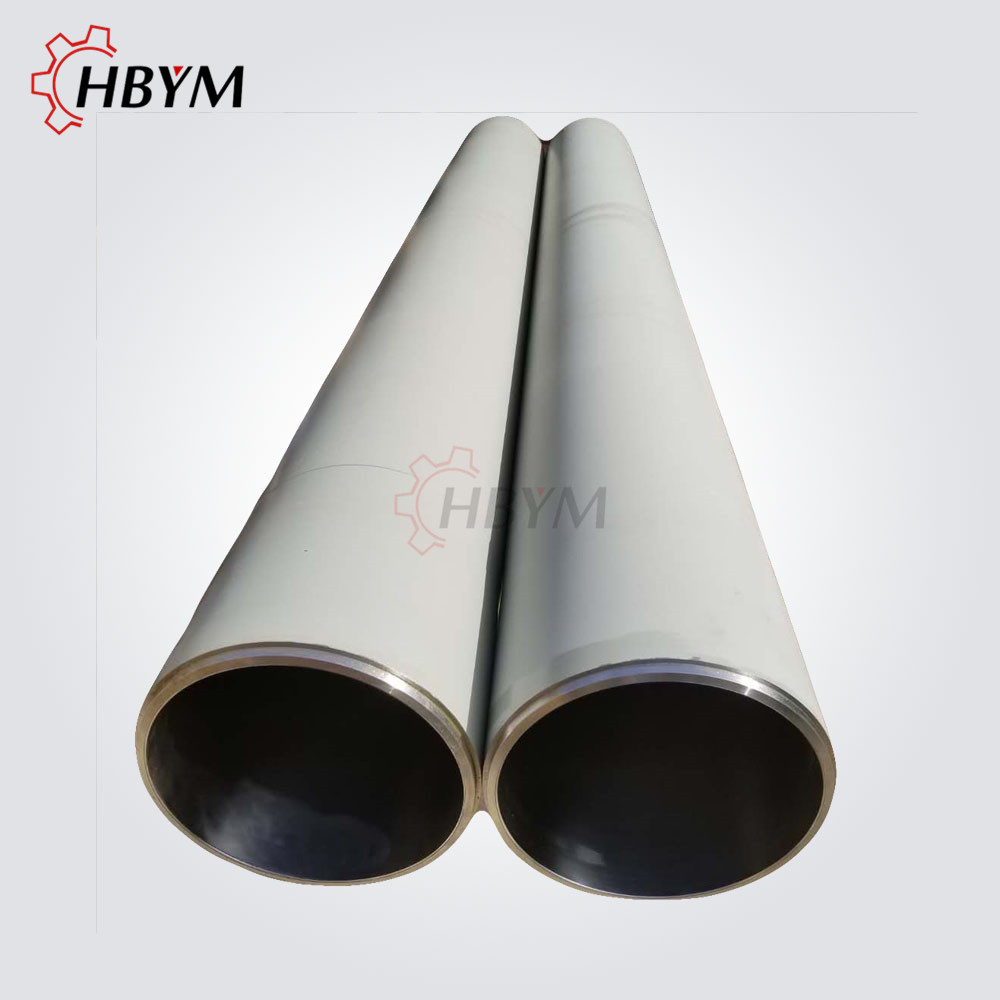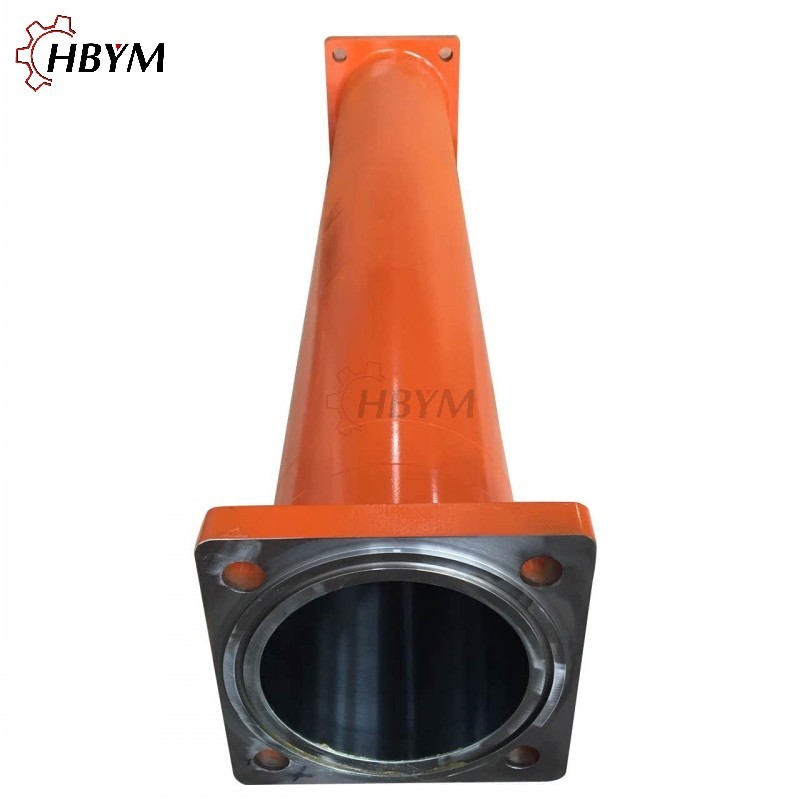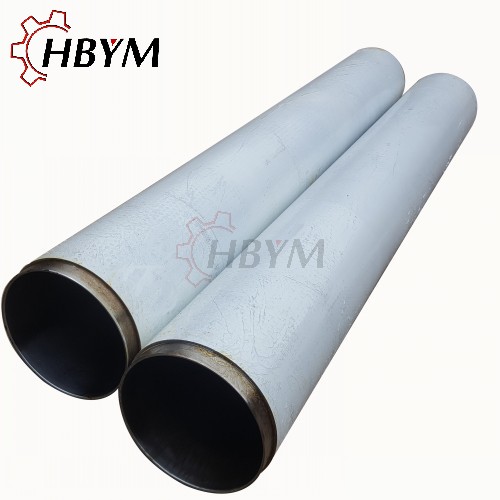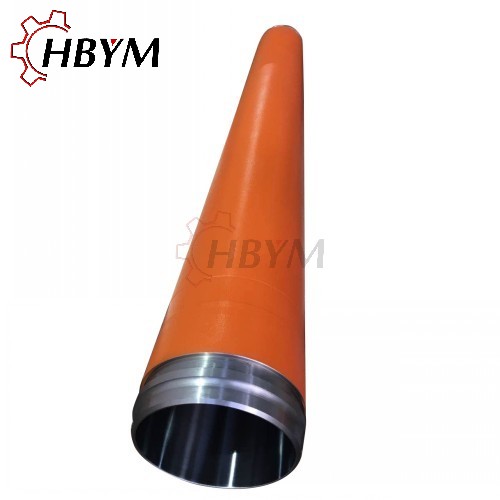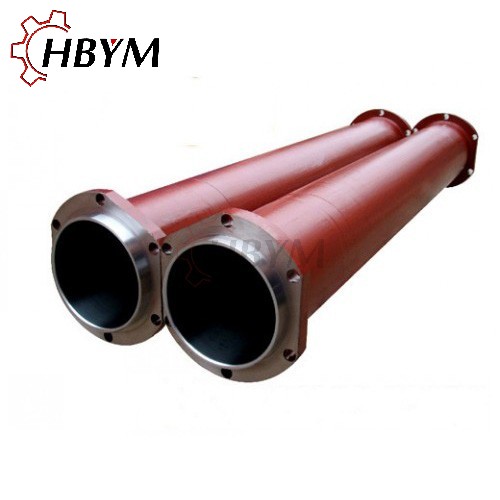Metal cutting machine tools are key equipment in modern manufacturing, and their production and technical level represent to some extent the manufacturing level and competitiveness of a country. China's manufacturing industry is achieving a historic leap from a manufacturing power to a manufacturing power. The industrial upgrading triggered by this will lead the Chinese machine industry to transform from low-end to high-end manufacturing. However, a series of problems such as the low production efficiency of the machine tools, the continuous increase of personnel costs and the limited level of machining technology are becoming bottlenecks that seriously restrict the industrial upgrading of the metal cutting industry. The unmanned machining, high-efficiency manufacturing and process integration capabilities of intelligent metal cutting technology help solve the above problems, balance the relationship between efficiency, cost and quality, and provide new products for the manufacture and application of metal cutting machine tools. Development model and development direction. Definition of intelligent metal cutting technology Since the 1950s, mechanical manufacturing technology has entered the era of modern manufacturing technology and has undergone four major development stages, including direct numerical control (DNC) technology to automate machining processes, flexible manufacturing systems for online process scheduling and planning. (FMS), Computer Integrated Manufacturing System (CIMS) that integrates CAD/CAM/CAPP technology and integrates with management and operation, and Intelligent Manufacturing System (IMS) and Intelligent Manufacturing Technology (IMT), which are currently becoming research hotspots. IMS/IMT mainly solves the formal description of manufacturing knowledge and experience, studies the manufacturing constraint problem under uncertainty and incomplete information, and enhances the flexibility and autonomy of manufacturing system through intelligent means. That is to say, DNC and FMS are mainly used to replace human physical labor, CIMS emphasizes the integration of logistics and information flow, while IMS/IMT pays more attention to the self-organization, self-learning and self-adaptive ability of manufacturing systems [1-3]. As a product of the combination of advanced manufacturing technology and digital technology, intelligent manufacturing technology is the application of computational models, simulation tools and scientific experiments to the quantitative description and analysis of manufacturing equipment, manufacturing processes and manufacturing systems, through the entire process of manufacturing. Quantitative calculation, simulation and control of complex physical phenomena and information evolution process, combined with scientific experiments, revealing the scientific laws of manufacturing activities and even the whole life cycle of products, improving the self-discipline and adaptability of manufacturing equipment, and realizing the manufacturing process and product performance. Predictive and effective control, enhance the maintainability of manufacturing systems and the reusability of manufacturing information, and drive manufacturing activities from a partially quantitative, empirical trial-and-error model to a fully digital computing and reasoning model to achieve science-based, high-performance manufacturing . Intelligent manufacturing emphasizes the integration of information integration and knowledge, the synergy between manufacturing systems and manufacturing processes, virtual simulation and digital processing software and hardware technologies, paying more attention to the underlying technologies such as digital modeling and digital processing, as well as the physical factors in the manufacturing process. Influence mechanism and realization of high-speed, high-precision digital processing equipment [4]. The metal cutting machine tool is the main component of intelligent manufacturing, and it is also a complex mechatronic system. At present, in the context of global competition, the production of high-precision and sophisticated equipment continues to pose new challenges to the ultimate energy efficiency of metal cutting machine tools. It is imperative to use information and computing technology, multi-disciplinary joint simulation methods and scientific experimental methods. Quantitative active control of the machining process is achieved by digital modeling, simulation and optimization of complex physical behavior during the cutting process. At the beginning of the 21st century, the concept of intelligent machine tools was proposed. It aims to replace some human brain labor through the application of digital manufacturing technology on machine tools, and control the quality of processing through independent monitoring and decision-making. Developed countries such as Europe and the United States have also adopted research plans, such as PMI, SMPI, and NEXT plans, for the study of machine tool intelligence. Therefore, applying intelligent manufacturing technology to metal cutting machine tools, establishing a synergistic relationship between processing equipment and processing, and laying the foundation for achieving higher levels of intelligence in manufacturing is one of the important development directions of national science and technology strategy. Intelligent technology for metal cutting machine tools At present, there is no standardized and complete definition of intelligent machine tools. The US SMPI program gives the basic characteristics of intelligent machine tools, including: (1) knowing its own processing capabilities and working conditions; (2) being able to automatically monitor and optimize its operating status; (3) measuring and judging product processing Quality; (4) self-learning and self-adaptive capabilities; (5) communication between machines. The main difference with ordinary CNC machine tools or machining centers is that intelligent metal cutting machine tools not only have CNC machining functions, but also have intelligent functions such as perception, reasoning, decision-making and learning, which are embodied in the following aspects. 1 process integration and modular processing Process integration, also commonly referred to as composite machining or complete machining, refers to all processes that can process a part on a single machine. For example, the INDEX company's turning and milling compound machining center can complete many processes such as turning, milling, drilling, hobbing, grinding, laser heat treatment, etc., to complete the complete processing of complex parts. Not only simplifies production management and scheduling, but also significantly increases transparency, enabling rapid resolution of what is happening and optimizing without the need for a complex planning system. The more complex the workpiece, the more obvious its advantages over the traditional production process [5]. In the process integration process as mentioned above, different processing modules are used for reasonable deployment; in actual production and manufacturing, in order to meet the flexible manufacturing requirements, not only the intelligent working unit of plug and play, but also the modularization is required. Manufacturing technology to coordinate the processing plan and processing. Modular manufacturing has two key concepts, one is standardized and characterized reconfigurable intelligent processing unit; the other is the decision-making system for rapid design, evaluation and use of unit combination scheme [6], especially to avoid process redundancy and The problem of coordinate interference. The flexible manufacturing system (TransFlex System) of Swedish Modig company adopts inverted gantry configuration, which can be easily connected in series or in parallel, plus logistics system and loading and unloading robot to form automatic production line or unmanned processing workshop, which will be highly efficient. Mass production and flexible manufacturing are combined. According to the characteristics of the aircraft structural processing technology, DS-Technologie has introduced the Sprint Z3 power head with parallel motion mechanism (Fig. 1), and has utilized the reconfigurable features to develop the Ecospeed series machining center. Taking into account the requirements of processing space and processing efficiency, it has been widely used in the field of aviation manufacturing. In recent years, brands such as Mikron, DMG, and EMAG have developed their own workpiece pallet management modules, which differ from traditional pallet change modules in that the new modules contain intelligent control systems that are independent of the machine control system. The staff can mix different workpieces together, and can change, add and delete the machining content and order of the workpiece online without affecting the machining process, as shown in Figure 1. 2 monitoring decision autonomy Intelligent machine tools require self-optimization, self-monitoring, self-diagnosis and pre-maintenance. In the process of processing, various sensors, audio and video systems can be used to monitor the force, vibration, noise, temperature, surface quality of the workpiece in real time [7], and then through the pre-established system performance parameter library or knowledge. The library performs automatic optimization and error compensation of cutting parameters. At the same time, timely maintenance according to the state of health, to ensure processing quality and reduce downtime. Mikron HSM series high-speed milling machining center (Fig. 2) equipped with intelligent machining system from Mikron in Switzerland can use the process monitoring module so that the user can observe whether the milling process is normal. Through the acceleration sensor installed near the front end bearing in the electric spindle housing, the vibration generated during the milling process can be displayed in the form of the acceleration g load value. The vibration size is divided into 10 levels in the range of 010g, and the vibration level spindle component can be predicted. The working life, the operator can take different measures according to the vibration level. In addition, the ITC intelligent thermal compensation system developed by the company uses temperature sensors to realize real-time monitoring of temperature changes at the cutting end of the spindle, and these temperature changes are reflected to the numerical control system. The intelligent thermal control module with thermal compensation experience value is built in the numerical control system. The position of the tool tip can be automatically adjusted according to the temperature change to avoid serious drift in the Z direction [8]. Fischer has introduced an electric spindle with axial displacement compensation. This structure is equipped with an axial displacement sensor in the housing of the electric spindle. It can detect the thermal displacement caused by temperature rise and the axial displacement caused by mechanical force. The data is processed. After inputting the numerical control system, the corresponding compensation can be performed to improve the movement accuracy of the worktable [9]. In recent years, the systems introduced by various CNC system manufacturers (such as SIEMENS, FANUC, etc.) have better tool monitoring functions. For example, the ACM adaptive monitoring system of Israel OMAT can be integrated in the SINUMERIK 810/840D system of Siemens. Sampling machine tool spindle load changes, recording machining parameters such as spindle cutting load, feed rate change, tool wear amount, etc., and output data to the Windows user graphical interface. GE fanuc intelligent platform company Proficy MTE equipment efficiency monitoring and analysis software can digitize the information generated in each part of the plant and build it into a virtual factory that can be accessed in any way and any time, and can generate corresponding data charts according to user needs. . At the same time, the system can predict the maintenance time according to the equipment usage, formulate the maintenance plan, and extend the average fault working time of the machine through the remote diagnosis tool to shorten the maintenance time [9]. 3 information and networking For modern manufacturing plants, in addition to improving the level of intelligence of machine tools, CNC machine tools must have two-way, high-speed network communication functions to ensure that information flow is unobstructed between the bottom layer of the shop floor and between the bottom layer and the upper layer. Thereby making full use of the manufacturing capabilities and characteristics of intelligent machine tools. The application of modern communication equipment such as computers, mobile phones, tablet computers, off-board and in-camera cameras realizes the communication functions of voice, graphics, video and text with processing equipment. The equipment can also be networked with the production schedule to reflect the machine's working status and processing progress in real time. After authorization, the operator can observe the processing and fault alarms on various terminals and perform online processing. The turning and milling machine tool produced by Mazak Company of Japan can not only perform the combined processing of parts, but also complete the whole process on one machine. It can also realize the online operation of the machine through different terminals through the configuration information tower (e-Tower) equipment. Plan scheduling and information processing, as shown in Figure 3. The company's production planning and scheduling system can schedule a week's processing tasks and send them to the information tower. The tower gives instructions to the operator and displays the real-time working status of the machine on the screen. The operator can download the NC program of the part according to the operation plan, perform simulation according to the on-screen instructions, perform machining without error, and report the machine status and task completion status to the relevant personnel [10]. The development trend of intelligent cutting technology At present, the intelligent technology applied to metal cutting machine tools is mainly derived from digital manufacturing technology. Its main goal is intelligent closed-loop processing, that is, strain and vibration generated by the machine tool during processing through intelligent sensing devices. Real-time status such as thermal deformation is fed back to the controller, and the processing trajectory is compensated online by using a targeted control algorithm, thereby effectively improving the machining accuracy, surface quality and processing efficiency; and shortening the processing through intelligent integration of the process and modular processing. Process, improve processing efficiency; realize intelligent interaction between machine tools and machine tools through networked technology. With the continuous maturity of the Internet of Things and cloud computing technology, the future of intelligent machine tools will take the following form. 1 Agent-based manufacturing technology In the current metal cutting process, the intelligent technology is mainly applied to the machine body. The workpieces and tools are still being processed and operated. The development of the Internet of Things technology, especially the miniaturization and autonomy of various intelligent components. The existence of workpieces, tools and even the working modules of the machine tool as an intelligent body becomes possible. In the future manufacturing process, the workpiece can be used as an ordering party to determine the process flow, select and control the fixture according to its own characteristics and processing targets, until the quality inspection of itself is completed; the tool can be self-recommended according to the process requirements, and the machine tool and workpiece Multi-directional selection, the processing parameters can be adjusted according to the working conditions, and the service life of the module can be predicted according to the daily use situation; in the modular processing mode, the modules can be coordinated with each other, and can provide their own use to the central control system. The characteristics and application direction can also be proposed to rectify or optimize the combination plan and deployment instructions issued by the system. Due to the existence of agents at all levels, the metal cutting process will be transformed from the current top-down form to the bottom-up form, and all production and manufacturing elements will be fully mobilized, and production efficiency will be further improved. 2 open manufacturing mode Over the years, China's machine tools (especially high-end machine tools) have the highest import and holding volume in the world. However, the production efficiency of these machine tools has not been fully utilized, and the average utilization rate is far lower than that of the world's major industrial countries. There are reasons for management, and there are also reasons for the manufacturing model. Although many enterprises have built enterprise-level manufacturing networks, they are fighting for each other. Machine tool resources are not fully utilized, and many good product design and manufacturing ideas are due to resources. Lack of it and give up. This problem not only exists in China, but also receives more and more attention in the world. The Defense Advanced Research and Planning Agency (DARPA) has proposed the idea of ​​open manufacturing, that is, making full use of social manufacturing resources, reducing production costs, shortening the development cycle, and turning good ideas into reality as soon as possible. What the machine tool company can do is to use the increasingly mature and reliable cloud computing technology to give the machine tool the ability to manufacture in the cloud. This not only requires enterprises to have a good information base, but also needs to overcome many technical difficulties, such as the cloud of knowledge manufacturing resources, manufacturing cloud management engine, cloud manufacturing application collaboration, cloud visualization and other technologies are important basic technologies that need to be overcome in the future. Conclusion The intelligentization of metal cutting machine tools will make multi-variety, small-volume, customized intelligent collaborative manufacturing become the main production mode of the enterprise, and play an important supporting role in the process of China's manufacturing from a big country to a manufacturing power. Some of the related technologies of intelligent machine tools have been commercialized, but there are still technical difficulties to be solved, such as the creation of knowledge bases and expert systems, the integration of multidisciplinary information and processing technologies, and the establishment of intelligent standard systems. The characteristics and needs, through the innovation platform of production, study and research, strengthen basic research, and promote the transformation of results, thus fully promoting the rapid development of China's intelligent metal cutting machine tools and intelligent processing technology.
Concrete Pump Delivery Conveying Cylinder
Concrete pump delivery cylinder is a very important part, Conveying cylinder is used in pump to delivery concrete.
The brand include : Putzmeister , Schwing , Zoomlion , Sany , IHI , etc...
1.Products Introductions
DN150*1099 , DN180*1103 , DN200*1585
DN200*2260 , DN200*2305 , DN230*1600,
DN230*2320 , DN250*2310,,
DN180*1175 , DN180*1320 , DN180*1520
DN180*2125 , DN180*1775 , DN200*1572,
DN200*1775 , DN200*2125 , DN230*2125 ,
DN260*2635,,
DN195*1570 , DN205*1900 , DN205*1538
DN205*1738 , DN220*1700 , DN220*1738,
DN220*1538 , DN220*1900,
DN200*1200 , DN200*1800 , DN200*1862 ,
DN200*1960 , DN200*2012 , DN200*2032 ,
DN200*2306 , DN230*1850 , DN230*2306 ,
DN230*1800 , DN230*2250 , DN260*2250 ,
DN180*1545 , DN180*1530 , DN195*1570 ,
DN200*1570 , DN200*1746 , DN200*1946 ,
DN200*2246 , DN200*2268 , DN230*1746 ,
DN230*2146 , DN260*2145 , DN260*2345 ,
2.Products Photos
Conveying Cylinder Conveying Cylinder,conveyor equipment,Hold Conveying Cylinder,Mitsubishi Conveying Cylinder HBYM GROUP Co,.LTD , http://www.hbympumpparts.com
Part No.
Name
Brands
Description
1
Concrete Pump Delivery Cylnider
Putzmeister
2
Concrete Pump Delivery Cylnider
Schwing
3
Concrete Pump Delivery Cylnider
Kyokuto
DN205*1768 , DN225*1768
4
Concrete Pump Delivery Cylnider
Niigata
DN210*1730
5
Concrete Pump Delivery Cylnider
Mitsubishi
DN205*1790 , DN205*2190
6
Concrete Pump Delivery Cylnider
IHI
7
Concrete Pump Delivery Cylnider
Zoomlion
8
Concrete Pump Delivery Cylnider
Sany
